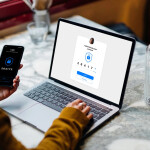Introduction:
In today's digital world, securing your online accounts is of utmost importance to protect your sensitive information from unauthorized access. This comprehensive guide will walk you through the essential steps of securing your online accounts with strong passwords and two-factor authentication (2FA). By implementing these security measures, you can significantly enhance the protection of your personal and financial data.
1. Importance of Strong Passwords:
Creating strong passwords is the first line of defense against unauthorized access. Weak passwords are susceptible to hacking attempts, making it easier for cybercriminals to breach your accounts. Follow these guidelines to create strong passwords:
a. Length and Complexity: Use passwords that are at least 12 characters long and include a combination of uppercase and lowercase letters, numbers, and special characters.
b. Avoid Common Patterns: Avoid using common patterns or easily guessable information like birthdates, names, or sequential numbers.
c. Unique for Each Account: Use a unique password for each online account to prevent a single breach from compromising multiple accounts.
d. Password Manager: Consider using a password manager tool like LastPass, 1Password, or Bitwarden to securely store and generate complex passwords.
2. Two-Factor Authentication (2FA):
Two-factor authentication provides an additional layer of security by requiring a second verification step when logging into your accounts. Here's how to enable 2FA:
a. SMS or Email Verification: Many services offer 2FA via SMS or email, where a unique code is sent to your registered phone number or email address.
b. Authenticator Apps: Use authenticator apps like Google Authenticator, Authy, or Microsoft Authenticator. These apps generate time-based one-time passwords (TOTP) that sync with your accounts.
c. Hardware Tokens: Some services support hardware tokens like YubiKey or Titan Security Key, which provide physical authentication for enhanced security.
3. Enabling 2FA for Popular Online Services:
Enable 2FA for your commonly used online accounts. Here are instructions for a few popular services:
a. Google: Visit your Google Account settings, navigate to the Security section, and follow the instructions to set up 2FA using Google Authenticator or other methods.
b. Facebook: Go to the Security and Login settings, select "Use two-factor authentication," and follow the prompts to enable 2FA.
c. Twitter: Access your account settings, go to the "Security and Account Access" section, and enable 2FA using an authenticator app or SMS.
d. Microsoft: Visit your Microsoft Account settings, select "Security Info," and follow the steps to set up 2FA using an authenticator app or other methods.
4. Best Practices for Account Security:
In addition to strong passwords and 2FA, follow these best practices to further secure your online accounts:
a. Regular Password Updates: Change your passwords periodically, especially for critical accounts like email, banking, and social media.
b. Be Cautious of Phishing Attempts: Be wary of suspicious emails, links, or requests for personal information. Always verify the legitimacy of sources before providing any details.
c. Monitor Account Activity: Regularly review your account activity for any unauthorized access or suspicious activity. Report any suspicious incidents immediately.
d. Keep Software Updated: Ensure your devices and software are up to date with the latest security patches to mitigate vulnerabilities.
Conclusion:
By implementing strong passwords and enabling two-factor authentication, you significantly enhance the security of your online accounts. Remember to create unique and complex passwords, utilize a password manager, and enable 2FA for all compatible services. Stay vigilant, practice good account security habits, and protect your valuable information from








